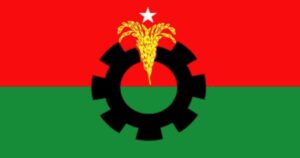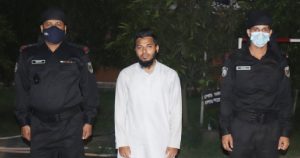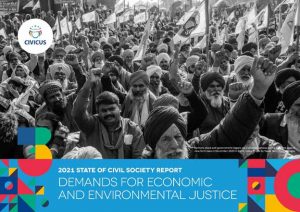Pyongyang saw the fall of its longstanding backer with understandable trepidation
Fyodor Tertitskiy
In December 1991, the Cold War ended with the collapse of the Soviet Union. This was an event the whole world was waiting for, yet while Moscow felt torn, and the West rejoiced, there was one country where the USSR’s collapse provoked nothing bu


t fear.I am, of course, talking about North Korea, where they not unreasonably feared they might soon share a similar fate.
Ultimately the DPRK managed – through a combination of luck and skill – to survive until the present day, with the Kim family weathering the many crises of the 1990s. However, in 1991, the regime’s survival was far from certain.
Mikhail Gorbachev’s “perestroika” policy changed the world. Though the word’s best translation would be “reconstruction”, what started as an attempt to radically reform the Soviet Union eventually led to the country’s fall and the “reconstruction” of the world order.
Looking back at Gorbachev’s era, one sees clearly the dramatic increase in personal and political freedoms afforded to its citizens – yet at the same time, inept management of the economy triggered an economic collapse.
It’s a fact little known that Moscow-Pyongyang relations were healthy throughout the 1980s. The DPRK began an ideological drift towards Moscow circa 1982-1983, when Kim Il Sung rejected the Chinese way of reforms and openness. This continued until the late Gorbachev era when it became apparent that the USSR was becoming even more reformist than Deng Xiaoping’s China.
The key event ending Communist rule in the USSR took place on March 14, 1990, when the Soviet Constitution was re-worded to remove mention of the Communist Party’s role as the country’s leading force. It was around this time that North Korea recalled its students from the no longer Communist USSR (although some of the students chose to escape).
Next February, the Warsaw Pact was dissolved, ending Soviet control over Eastern Europe.
In August 1991, the USSR itself was to be reformed into a confederation called “the Union of Sovereign States”. The treaty was to be signed on August 20th, replacing the original Union Treaty of 1922. It was at this point that Gorbachev’s enemies took action.
AUGUST COUP
Not everyone in the Soviet leadership was happy with what Mikhail Gorbachev was doing. While some argued for even more radical reforms – including Russian president Boris Yeltsin – there were those who felt betrayed by Gorbachev’s line. Gorbachev, they felt, was destroying the great country they served, making concession after concession to the West for no reason, while the Soviet Union itself slowly descended into anarchy. Only a radical measure, they came to believe, could save the country.
The mastermind of the conspiracy was most likely Vladimir Kryuchkov – the Chairman of the KGB. He was supported by the Minister of Defense, Marshal Dmitriy Yazov. However, the only person who could have assumed power in the case of Gorbachev being removed was Vice President Gennadiy Yanayev. Noted for being a very weak and indecisive character, he was nevertheless ultimately s persuaded to join the conspirators.
One day before the signing of the new Union Treaty, the conspiracy was set in motion. On August 19th, Gorbachev was put under home arrest and the conspirators issued a proclamation announced on Soviet television.
The conspirators, using the label “the Soviet leadership” announced that Gorbachev had stepped down for health reasons – and supreme authority went to the State Emergency Committee, headed by Yanayev. The proclamation ended with the rather menacing phrase:
It has been established that the decisions of the State Emergency Committee of the USSR are to be obeyed without question by all authorities and administrations, officials and citizens throughout the territory of the USSR.
By orders of Marshal Yazov, the army moved on Moscow.
It was a great shock for everyone, as some people felt that Gorbachev’s line might be reversed completely. President Yeltsin led the resistance, calling for people to come to defend the Russian government against the coup. The fate of the entire nation – and maybe even the world – hung in the balance.
Meanwhile, in Pyongyang, they were watching, too. The then Soviet Ambassador, Aleksandr Kapto, was a former chief of the Ideological Bureau of the Party – and he was most welcoming to the coup. The DPRK shared his joy – and propaganda cars in the country started to announce that “traitor Gorbachev has been overthrown”. However, Pyongyang was not totally sure that the coup would succeed – and Rodong Sinmun reported on the events from the Soviet Union in a carefully neutral tone.
In Moscow, it became apparent that the State Emergency Committee was not fully in control, as many Muscovites came out to defend Yeltsin in defiance of the Committee’s orders. Yeltsin himself announced that in Gorbachev’s absence, he, as the head of the Russian state, assumed the authority of Supreme Commander – and ordered the army to return to barracks.
The final event came when Team Alpha, an elite unit of special forces, refused Kryuchkov’s order to storm Yeltsin’s residence. The only option left for the State Emergency Committee was to provoke a civil war – but the conspirators had enough conscience left to understand how devastating this would be and chose to surrender to avoid bloodshed.
Yazov ordered the troops to stand down and exit the capital and Kryuchkov went to Gorbachev to apologize. Finally, Yanayev formally dissolved the Committee and nullified its decisions. The coup had failed.
THE FALL
The coup’s failure marked the final flick of the dominoes. Fearing another attempt to install a junta in Moscow the constituent Republics began to secede from the Union one after another.
A few days after the coup, President Yeltsin suspended the Communist Party’s activities on Russian soil – and no one appeared to defend the “leading and guiding force of the Soviet society and the nucleus of its political system, of all state organisations and public organisations” as the CPSU had been defined in the original 1977 Constitution.
On September 6th, the State Council of the USSR formally recognized the independence of Lithuania, Latvia, and Estonia. The DPRK followed with their recognition later the same month.
Diplomatic relations with Vilnius and Riga were established, although Tallinn did not reciprocate, refusing even to recognise North Korea as a state. Ironically, of the maps issued in Pyongyang the next year only the map of Europe showed the three countries as independent states – the map of Asia, for some reason did not – perhaps because the people responsible for it were not told to change it.
On September 28th, the All-Union Leninist Young Communist League – better known under its Russian name Komsomol – dissolved itself, saying that its historical role had been fulfilled. The history of the Komsomol, which, as Soviet English textbooks taught “is inseparably connected with the history of the Communist Party”, came to an end – and soon the Communist Party followed.
On November 6th, one day before the anniversary of the Communist Revolution, the CPSU was declared an illegal organization and dissolved by President Yeltsin. North Korea, nevertheless, did congratulate Gorbachev on the Revolution’s anniversary the following day. Signed “November 6th”, the day when the Communist Party was outlawed, the congratulatory telegram looked unintentionally sarcastic.
On December 8th, leaders of Russia, Ukraine, and Belarus – the only surviving Republics out of the four which had signed the original Union Treaty of 1922 – met in Belavezha Forest in the Byelorussian SSR and announced the Treaty to be null and void. Gorbachev was shocked by the news but could not do anything. On December 21st, representatives of eight Soviet Republics met in Alma-Ata and announced that the USSR was to be replaced by the “Commonwealth of Independent States”.
On December 25th, Gorbachev yielded. He addressed the nation for the last time, announcing his resignation and transferring authority to Yeltsin. Meanwhile, Russia announced that its name was to be changed from the “Russian Soviet Federative Socialist Republic” to the “Russian Federation”.
On the same day, the red flag over the Kremlin was lowered – by Russia’s Deputy Premier Gennadiy Burbulis – and replaced by the new Russian tricolour

, which, after decades of communism, retook once again its place as the symbol of the Russian state.
In North Korea, it is this lowering of the flag which is today perceived as the symbolic end of the Soviet Union – although the USSR lived for one more day.
THE FINAL DAY
The end of the Union of Soviet Socialist Republics was a rather anticlimactic day – to the point that it was not even noticed by most people and the exact date was only determined later on by historians. The day was Thursday, December 26, 1991. By this time, the Soviet Union had no constituent republics left, no President, no Party, no flag over the Kremlin and no international recognition – Russia had taken its place in the United Nations the day before.
All that was left was the Supreme Soviet, or rather the remains of its upper house – the Council of the Republics – which had been established a few months before. On December 26th, this Council – or rather what was left of it – convened one last time to put the last nail into the USSR’s coffin. It was called the Soviet Union after all – and it was for the Supreme Soviet to wield the hammer and dissolve it.
The final session of the Council of the Republics did not in any way resemble the historic event it actually was. As its transcript shows, it mostly involved petty bickering, with only the Chairman Anuarbek Alimzhanov – a Deputy from the former Kazakh Soviet Socialist Republic – trying to uphold the order and solemn atmosphere befitting such an event.
The meeting’s primary purpose was the adoption of the Declaration 142-N – which stipulated that the USSR was no more. This is how it was adopted – and this is how the history of the Soviet Union came to an end.
THE CHAIRMAN: Will we do this? We do have the quorum a sense is that of the seven members of the Council of Republics five are not here. The rest of the delegations do not have all their members here, as they should according to the law. Representatives from the Russian Federation are also present. Of course, these are representatives of autonomous republics, but they have the same rights.
Since some people do not sit in their seats, there are not buttons everywhere and some deputies say that they forgot to bring their cards, we probably will vote in the old tried and tested way – by raising hands.
Let us vote. Today’s meeting is no different from the past – there are as many people, only they sit in different places, and most say that they did not take cards.
If we count all those present in the hall – both the members of the Council of the Union and the deputies – we have the authority to adopt the Declaration. This is the last meeting. All the time we went, upholding some legal basis. And today we, as the upper chamber, have the right to adopt such a Declaration.
So let us vote. Who votes for adopting this Declaration with all the amendments and remarks? (Noise in the hall) … 17 people – these are from Kazakhstan. Of course, there should be 20 people from each republic, but from Kazakhstan – 17. Let us say that if there are more than 10 people from Belarus, then the majority is here. Representatives of Russia are here. So no matter how we interpret it, there is a quorum.
So, the Declaration, with all the amendments and remarks, is adopted. Its text will be finalized today, immediately after the meeting.
Even if you, dear reader, are interested in Soviet history, and even if you were in Moscow in December 1991, it’s likely you didn’t know about these final moments of the Soviet state. If so, you can probably forgive Pyongyang for not noticing either.
The Rodong Sinmun did report on the collapse of the USSR on the correct date – December 26th – but referenced the December 21st declaration instead. The article named “Gorbachev resigns from the position of President. Heads of 11 republics announce the creation of the Commonwealth of Independent States” stated: “the declaration pointed out that with the creation of the Commonwealth of Independent States the Union of Soviet Socialist Republic ceases to exist.”
It was over.
NEW AGE AND NEW MAPS
Two days before the USSR ceased to exist, Kim Jong Il was appointed Supreme Commander of the Korean People’s Army. The future the Supreme Commander faced was grim – and a rather difficult one to adapt to.
Even the official maps in the Korean Central Yearbook reflected this state of uncertainty. The first map after the collapse of the USSR included a map of Soviet Union with the inscription “Russian Federation” (??, a short form of ??? ??).
More or less accurate maps began to appear in 1993, but one mistake persisted for more than a decade.
As some readers may know, Russia has an exclave called Kaliningrad Oblast. Formed in 1946 from the annexation of the German city of Königsberg, it was a part of the Russian SFSR and a part of Russia after 1991. Nevertheless, for some reason, for fifteen years, North Korean maps depicted it as a part of Lithuania.
These years saw four Russian ambassadors to the North – the above mentioned Kapto, and also Fadeev, Denisov and Karlov – and apparently none of them bothered to mention it. The new and correct map was finally published after Ambassador Suhinin was appointed – and it’s possible that it was he who finally made Pyongyang correct their maps.
Ironically, even now there is some discrepancy between various maps of Russia s in the North. Pyongyang recognizes Crimea as a part of Russia – yet this is shown only on maps of Europe. On maps of Asia, Crimea is not depicted as Russian land – probably because once again, no one bothered to check.
RESPONSE TO THE FALL OF COMMUNISM
Economically, the fall of the Soviet Union was a devastating blow to North Korea. Available documents from the Russian Ministry of Foreign Affairs show that Moscow’s position at the time was (and has been ever since) “we still would like to have good relations with you, but don’t expect any unilateral help.”
Given that China was not willing to step in and that the North Korean economy was extremely dependent on foreign assistance, this meant collapse – the first signs of famine had already started to appear before Kim Il Sung’s death in 1994.
However, there was an even bigger issue to deal with. The socialist system, said DPRK doctrine, was infinitely superior to rotten capitalism. So how was it that the world’s most powerful socialist country was no more?
The answer North Korea came up with was the answer it gives to most questions: “Kim Il Sung is the greatest,” “Love the Great Leader even more.”
Apparently, they explained, the USSR was betrayed by Gorbachev, who was a terrible leader.
The former Soviet President joined the list of villains in North Korea historiography, despite the friendship of the 1980s and the fact that while Gorbachev was in power, Kim Il Sung congratulated him multiple times. North Korea will not collapse, insisted Pyongyang, because they had Kim Il Sung and Kim Jong Il – the geniuses of leadership.
The most interesting thing about this statement is that it is to a large extent true. Indeed, North Korea did not collapse, and indeed, the major contributing factor was that the Kim dynasty rejected reform.
They were indeed, geniuses of leadership – but only, of course, if “leadership” means “self-preservation.”
Featured image: RIAN archive
Edited by Alessandro Ford and Oliver Hotham – Source: NK News




